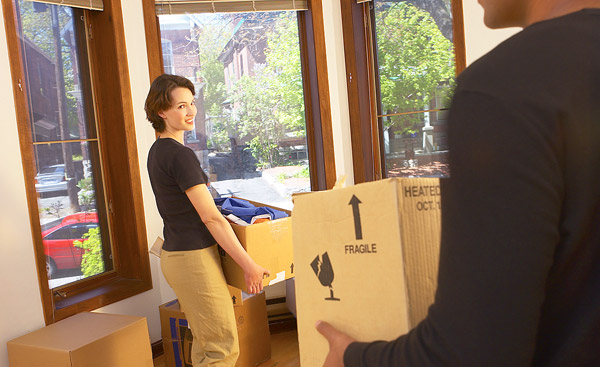YOUR KEYS TO A GOOD MOVE
The thought of moving usually leaves people feeling stressed out and overwhelmed. However, it doesn't have to. If you take the time to organize your home before moving day, the process will go a whole lot smoother.

MODE OF TRANSPORTATION
First you have to decide if you will be moving yourself or hiring a company to do it for you. If you are doing it yourself, make sure you have enough help and trucks/vans to load up your boxes. If you decide to hire outside help, do some research on moving companies and schedule them as early as possible (months in advance if you can).
WHAT TO PACK
 Before you start packing up your house, decide what you really need to bring into your new home. Many things lose their value or use over the years, but you still hang on to them. Moving is the perfect time to rid yourself of this clutter by throwing out or donating items that have outlasted their usefulness. Doing so will make your move much lighter and quicker.
Before you start packing up your house, decide what you really need to bring into your new home. Many things lose their value or use over the years, but you still hang on to them. Moving is the perfect time to rid yourself of this clutter by throwing out or donating items that have outlasted their usefulness. Doing so will make your move much lighter and quicker.START EARLY
Don't wait until the last minute before you start packing. Begin early and pack up the things you won't need until you move, like off-season clothing, books, pots and pans, etc., or start in a room you don't use very often, such as the basement or garage.
Once you've loaded these things into boxes, designate a room or corner in your home to stack them up until you are ready to load them on to the truck. In the weeks before you move, you can pack while watching TV or chatting with friends -- anything you can get out of the way now will help you later.
LABEL YOUR BOXES
Keep all items from each room together and then label each box with the room they belong in. This will go a long way in keeping things organized and make unpacking quicker. Also, label boxes containing fragile items, especially if you are having movers transport your things.
LEARN YOUR NEW ADDRESS
It might sound basic, but most people don't make the effort to learn their new address before moving in. You will need it early on to give to everyone from the postal service to the pizza delivery guy. (Bonus: Work out the directions so you can guide someone to your house.)
SEPARATE OUT A BOX OF NECESSITIES
Take one box and fill it with stuff you will need as soon as you get in your new home, such as toilet paper, soap, light bulbs, garbage bags, sheets, towels... and anything else you think you will immediately need.  This will eliminate the hassle of rummaging through all your boxes to find your toothbrush.
This will eliminate the hassle of rummaging through all your boxes to find your toothbrush.
 This will eliminate the hassle of rummaging through all your boxes to find your toothbrush.
This will eliminate the hassle of rummaging through all your boxes to find your toothbrush.ORGANIZE YOUR UTILITIES
Make sure you have turned on all your utilities in your new home before you move in. Contact the gas, electric, phone, water and cable companies before you move so they are ready and waiting for you. You don't want to have to unpack your things in the dark -- or in the heat if the air conditioning isn't working!
On the flip side, don't have your utilities turned off in your old house until after you leave. You're going to want that electricity while your packing and moving things out, and if you have a landline, you might need that phone to make calls pertaining to your move.
EASIER THAN YOU THINK
Moving doesn't have to be a headache, but you have to prepare for the big day. Don't procrastinate, keep things organized and you'll enjoy a smooth, stress-free move.
Movers Bell Gardens
Movers West Los Angeles
Moving Companies in West Los Angeles
 I've had a lot of requests from business owners or employees who are stuggling with organizing an office move. While this site has primarily focused on household moves, it's time to expand to other types of moves that require just as much, if not more, planning and preparation.
I've had a lot of requests from business owners or employees who are stuggling with organizing an office move. While this site has primarily focused on household moves, it's time to expand to other types of moves that require just as much, if not more, planning and preparation.